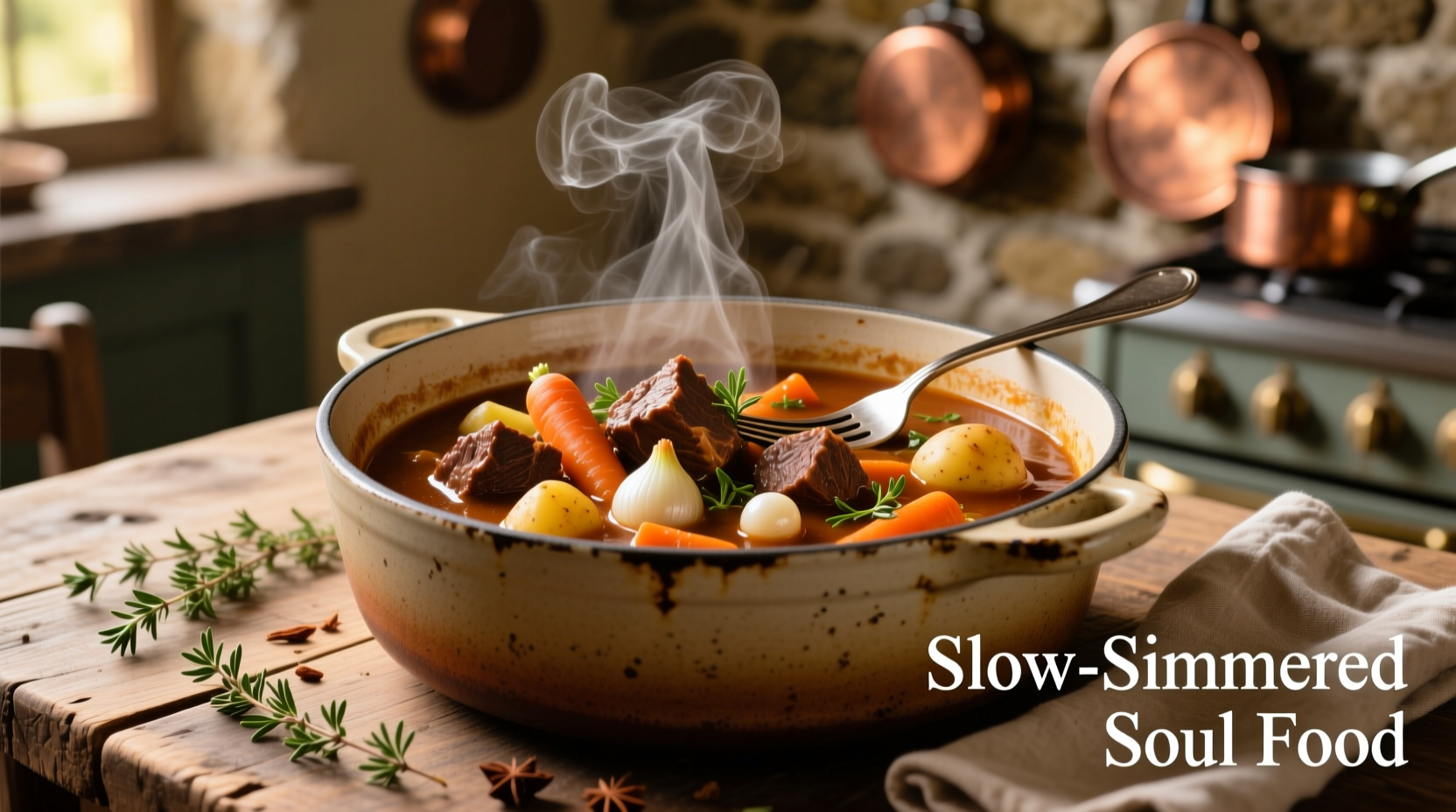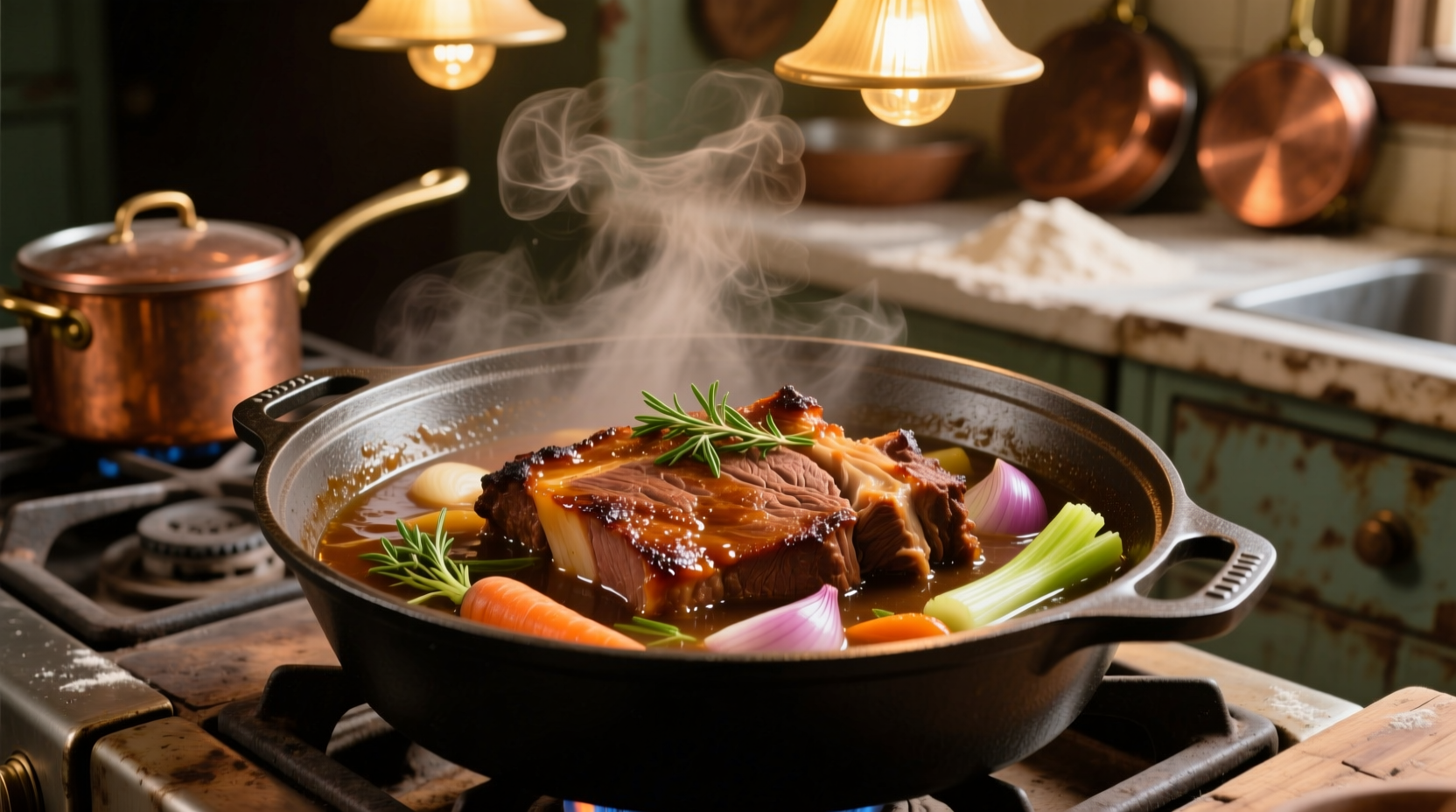Getting perfectly tender stew meat isn't just about timing—it's understanding the science behind meat transformation. Many home cooks struggle with tough, chewy results because they either undercook or misjudge how different variables affect the cooking process. Let's break down exactly what you need to know for consistently fork-tender results.
The Science Behind Perfectly Tender Stew Meat
Stew meat comes from tougher cuts like chuck, round, or brisket—muscles that work hard during the animal's life, creating dense connective tissue. The magic happens when collagen (the tough connective tissue) breaks down into gelatin through slow cooking. This transformation begins around 160°F (71°C) and accelerates between 180-205°F (82-96°C), but takes time—typically 1.5-3 hours—to complete.
Unlike quick-cooking methods, stewing requires patience. Rushing the process by increasing heat won't speed up collagen breakdown—it'll just make your meat dry and stringy. The ideal temperature range for tenderizing is a gentle simmer (180-200°F), not a rolling boil.
How Cooking Method Affects Stew Meat Timing
Your cooking equipment dramatically impacts required time. Here's what USDA Food Safety and Inspection Service and culinary research from America's Test Kitchen confirm:
| Cooking Method | Temperature Range | Recommended Time | Key Considerations |
|---|---|---|---|
| Stovetop Simmering | 180-200°F | 1.5-2.5 hours | Maintain gentle bubbles; check every 30 minutes after 1.5 hours |
| Slow Cooker | Low: 190-200°F High: 280-300°F |
Low: 7-8 hours High: 4-5 hours |
Low setting produces more consistent tenderness |
| Pressure Cooker | 240°F at 15 PSI | 35-45 minutes | Includes natural release time; reduces liquid by 30% |
| Oven Braising | 300-325°F | 2-3 hours | Covered dish; check liquid levels periodically |
When to Adjust Your Cooking Time
Several factors require timing adjustments for optimal results:
- Cut selection: Chuck roast (rich in marbling) tenderizes faster than leaner round roast
- Meat size: 1-inch cubes need 20-30% less time than 2-inch chunks
- Acidity level: Tomatoes or wine accelerate breakdown but can make meat tough if added too early
- Altitude: Above 3,000 feet, add 5-10 minutes per 1,000 feet of elevation
According to the National Cattlemen's Beef Association, adding acidic ingredients during the last hour of cooking prevents premature protein tightening that leads to toughness.

How to Tell When Stew Meat Is Perfectly Cooked
Don't rely solely on the clock—use these visual and tactile indicators:
- The fork test: Meat should offer no resistance when pierced with a fork and separate easily along muscle fibers
- Texture assessment: Properly cooked stew meat feels yielding but maintains structure (not mushy)
- Internal temperature: While not essential for tenderness, USDA recommends 145°F minimum for safety with 3-minute rest
- Gelatin test: Sauce should have a slight viscosity from dissolved collagen
Overcooked stew meat loses structural integrity and becomes dry despite the liquid environment. Undercooked meat remains chewy with visible muscle fibers resisting separation.
Troubleshooting Common Stew Meat Problems
Problem: Meat still tough after recommended time
Solution: Continue cooking in 20-minute increments. Check liquid temperature—many stovetops don't maintain consistent simmer. Add 1-2 tablespoons of vinegar to accelerate breakdown.
Problem: Meat falling apart too much
Solution: You likely used too high heat or overcooked. For future batches, reduce temperature and check tenderness starting at 1.5 hours.
Problem: Uneven tenderness
Solution: Cut meat into uniform sizes. Remove more tender pieces as they finish and continue cooking tougher sections.
Pro Tips for Foolproof Stew Every Time
- Pat meat dry and brown thoroughly before adding liquid—this develops flavor through Maillard reaction
- Maintain consistent gentle simmer (about 1 bubble per second)
- Add root vegetables in the last 45 minutes to prevent mushiness
- Let stew rest 15-20 minutes off heat before serving—flavors meld and meat reabsorbs juices
- Refrigerate overnight—next-day stews often have superior texture and flavor
Remember that stew meat's transformation follows a non-linear timeline. The collagen breakdown process accelerates dramatically after the 90-minute mark, which is why checking tenderness at 1.5 hours is crucial. As culinary science research from the University of California, Davis shows, the most significant texture improvement occurs between 90-150 minutes of cooking at proper temperatures.
How long does beef stew meat take to cook on the stove?
Beef stew meat typically requires 1.5-2.5 hours of gentle simmering on the stovetop. Start checking tenderness at 1.5 hours using the fork test—meat should separate easily along muscle fibers without resistance.
Can you overcook stew meat in a slow cooker?
Yes, even in a slow cooker. While designed for long cooking times, stew meat can become dry and stringy if cooked beyond 8 hours on low or 5 hours on high. The ideal window is 7-8 hours on low setting for optimal texture.
Why is my stew meat still tough after 3 hours?
Several factors could cause this: insufficient cooking temperature (needs 180°F+), lean cuts requiring longer time, or acidic ingredients added too early. Continue cooking in 20-minute increments while maintaining proper temperature, and consider adding 1-2 tablespoons of vinegar to accelerate collagen breakdown.
Does stew meat get more tender the longer it cooks?
Only up to a point. After collagen fully converts to gelatin (typically 2-3 hours), continued cooking causes muscle fibers to contract and dry out. The ideal window is when meat is fork-tender but still maintains structure—usually between 1.5-3 hours depending on cut and method.











 浙公网安备
33010002000092号
浙公网安备
33010002000092号 浙B2-20120091-4
浙B2-20120091-4